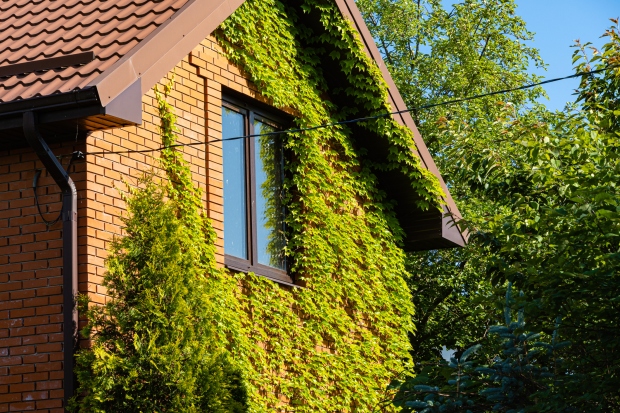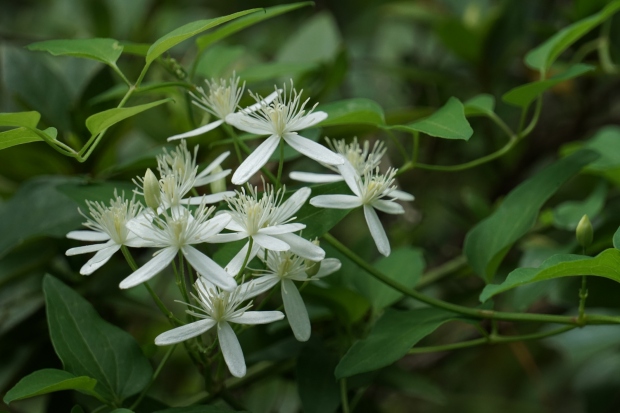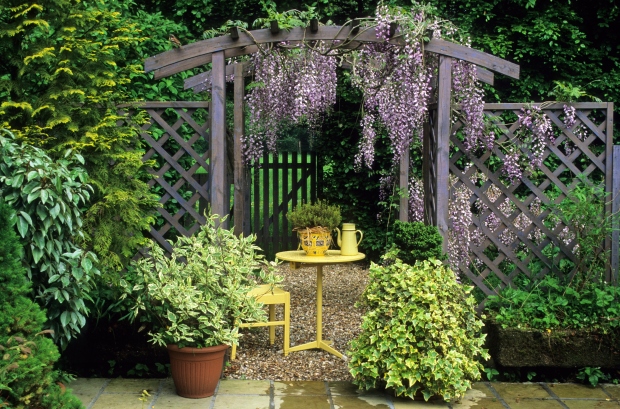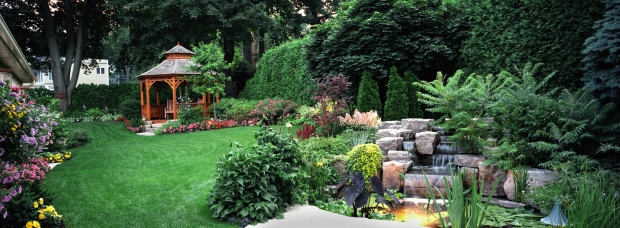Growing Vines for Shade Production
Is there anything more relaxing than lounging under a shaded pergola on a sunny afternoon? We all know how rejuvenating it can be to sit under a shade tree in the summer, and shade-producing vines provide a similar effect anywhere you choose to place an arbor or other structure.

Shade-producing plants tend to be fast-growing and produce an abundance of big leaves all summer long. Beyond shade, they offer privacy, camouflage, and in some cases, color — especially varieties like Boston Ivy that turn colors in the fall.
Popular Shade Vines
Some of the most popular shade vines include the following:
- Hardy Kiwi: While it’s also known for fruit production, hardy kiwi produce lots of luscious green growth. Expect them to take a year or longer to get established, but after that, you’ll need to prune regularly to keep things in check.
- Boston Ivy: Renowned on college campuses across the Northeast, Boston Ivy traditionally grows up buildings but is just as happy on trellises. The thick, waxy leaves last all growing season and keep things cool and shaded.

Many shade vines also stand out for flower production. Here are some that serve both purposes:
- Black-Eyed Susan Vine: Like its showy relative, this vine produces an abundance of yellow-orange blossoms and blooms from midsummer through the first hard frost. Train them up a wall or along an arbor for both shade and flower production.
- Sweet Autumn Clematis: This shade lover blooms late in the year with fragrant white, purple, or blue flowers across the whole plant. The rest of the time, its abundant leaves will provide shade wherever it’s planted.

- Wisteria: Considered to be the queen of flowering vines, wisteria produces beautiful fragrant blossoms that drape down, making it the perfect pairing for a pergola. The plant’s fast growth and broad leaves make it an excellent shade provider as well.

- Angel Trumpet Vine: This tenacious grower is hard to kill, and it produces big, trumpet-shaped orange flowers that are a favorite with hummingbirds. Make sure you prune yours regularly, as the plants can quickly get so heavy they pull down their support structure.
Final Tips for Establishing Shade Vines
If you want to get the maximum benefits from your shade vines, it pays to put in some planning effort to ensure you get things right the first time.
Think through their positioning: The goal of shade vines is to get relief from the sun, so orient them in your yard so you maximize the benefit. It’s smart to position the support structure where it casts shade on a seating area. For example, consider a west-facing placement to provide shade in the midafternoon and evening.

Help with placement: Many vines latch themselves onto support structures without any help, but you’ll want to aid the process if you want to maximize shade production. Weave any new growth that appears through openings in the latticing, and use plant ties or wires to keep things in place. You can reposition them as the plant grows bigger.
Don’t fight your vine: You might have an idea of how you want your vine to grow, but the plant could have other ideas. Let it twine the way it wants to go naturally so you’re not forcing it to grow left when it wants to go right.